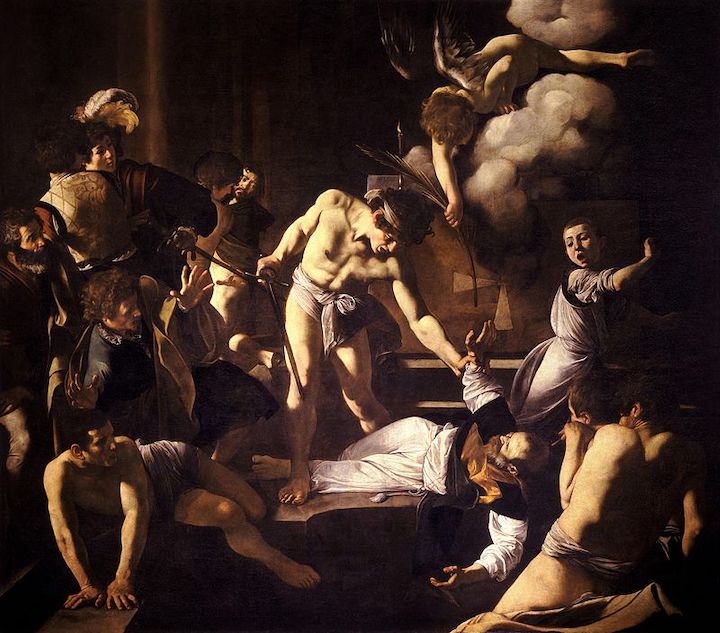Individualism, the belief that each person, in the words of the Supreme Court, has “the right to define one’s own concept of existence, of meaning, of the universe, and of the mystery of human life,” has triumphed in our world after a centuries-long gestation. It has its taproot in Martin Luther’s “priesthood of all believers;” it later received its philosophical orientation from the Enlightenment and its political power from liberalism. It is now modernity’s prevailing worldview, with countless contemporary pathologies deriving from it.
Individualism reached its destructive apogee with the Sexual Revolution. Its promise of neutering sex’s life-giving powers seduced our fallen nature, and society was quick to bless sex as the means of individual fulfillment. As a direct and predicted consequence, the family was quickly subordinated to the individual’s carnal desires – divorce, cohabitation, and wide-spread fornication among the young became the norm. “Broken families” became an accepted phenomenon, often broken by an adult’s unregulated desires.
In recent years, the Sexual Revolution has taken a devious turn. On the grounds that the individual can express himself sexually however he pleases, not even nature can stop him: we have societal acceptance of same-sex marriage, “transgenderism,” drag queen story hours, and, most recently, “birthing people,” as a real term used in all seriousness by educated people.
The great sacrament of the Sexual Revolution is abortion, which prevents nature from spoiling the individual’s twisted fun. We have fallen so far that sex without abortion as contraceptive back-up is perceived as women “being sentenced to being parents.”
Should the Supreme Court overturn Roe v. Wade in June, abortion will still be legal and available in this country, though not in as many places. But the prospect of abortion as not-quite-so-on-demand has those who champion the Sexual Revolution in full panic.
Abortion advocates’ current paranoia gives rise to an intriguing thought experiment: How must the practices and demands of the Sexual Revolution change if abortion were suddenly made illegal, as it once was in this country?
First, let’s consider an ideal scenario that believing Christians have long desired. Without abortion, what counts today as “sex education” would shift from a “how to” guide to sincere abstinence teaching; university dormitories would cease doubling as red-light district housing; marriage rates would rebound, with more couples tying the knot in their early twenties rather than early thirties.

A second scenario is far more likely: the ingrained practices of the Revolution would continue, with an urgent emphasis on long-lasting contraception, which would be made available beginning at age 15 with the government paying for all of it; sterilization would become even more common, including among the young and single; a steady black market for abortion-inducing pills would be a well-known secret throughout the country.
In other words, the fear of “unwanted pregnancies” without abortion as a back-up will not be enough to stop, or even slow, the Sexual Revolution. Though fear is a powerful motivator – often it drives women to abortion clinics – it is not enough to change a deeply ingrained and celebrated lifestyle, which is what the Sexual Revolution has become.
St. John Henry Newman saw more clearly than most that “you do not get rid of vice by human expedients.” Something deeper is needed. To stop the Sexual Revolution, which finds ready reception not in our heads, but in our primitive longings, we cannot appeal to the mind. We must move the heart. And, said Newman, “the heart is commonly reached, not through the reason, but through the imagination.”
Newman knew that Christianity alone has the power to renew the heart and the will. The Sexual Revolution rebelled not against a sexual morality deeply rooted in Christ and His invitation to friendship, but against rules that had been separated from their life-giving source. Only by putting the two back together, and leading with Christ, will we save at least some souls from the poisonous tide of the Revolution.
The watered-down Catholicism of the post-conciliar Church has proven incapable of stirring the imagination; the proof is in the empty pews. We need the Catholicism that created martyrs, cathedrals, great art, and unforgettable literature. This is the Catholicism of sacrifice, of radical imitation of Christ, of pure love for God as the only reason for our existence.
Pope St. John Paul II harnessed this beautiful vision of Catholicism into a sexual morality that speaks to the heart – the Theology of the Body. It animates the imagination by presenting a deeper vision of what love is for and how it is best expressed – as the gift of self to another. Its target audience, therefore, is teenagers and young adults looking ahead to marriage. And its success lies in the countless large Catholic families around the country that have deliberately rejected the empty promises of the Sexual Revolution for a life that is much more demanding in the short run, but filled with so many more blessings, both now and as the couple moves into its later years of marriage.
With Roe on the brink and the intelligentsia in our society about to convulse, let’s get ready to offer freedom in truth to those tangled up in the lies of the Sexual Revolution. On the field of the imagination, the vision of heroic self-sacrifice is the only effective weapon to combat radical individualism. Likewise, the Theology of the Body, through which, as Newman’s motto has it, “heart speaks to heart,” can lift at least some from the tyranny of concupiscence to the freedom of sacrificial love.
*Image: The Martyrdom of St. Matthew by Caravaggio, 1599-1600 [Church of St. Louis of the French (San Luigi dei Francesi), Rome]
You may also enjoy:
St. John Henry Newman’s A Suicidal Act















